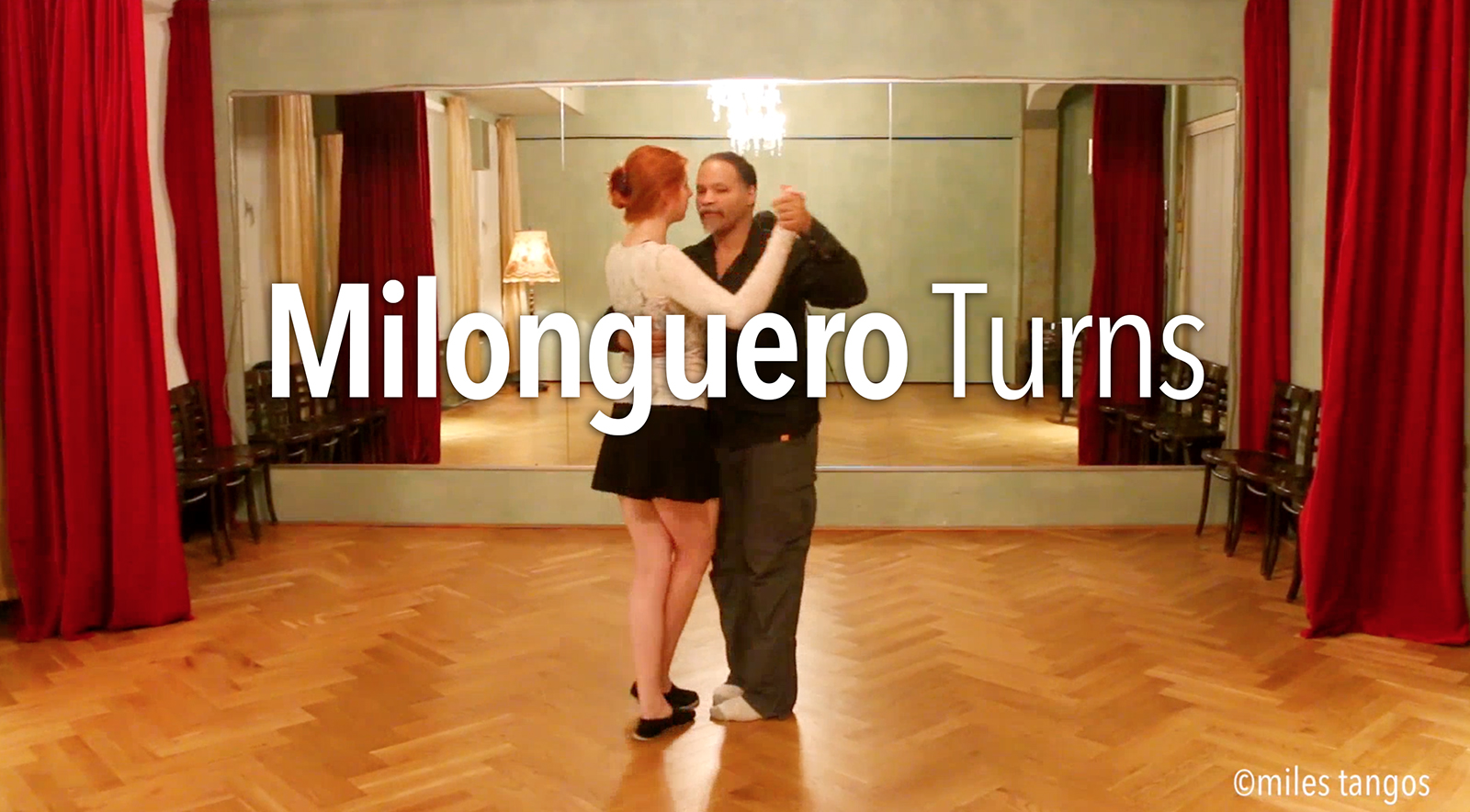The Milonguero Turn is a very useful piece of tango vocabulary and yet it is almost never taught anymore, sadly. It has been supplanted by its sexier kissin’ cousin, the Follower’s Molinete. Put simply, when you really stop and think about the Milonguero Turn, is nothing more than a backcross, a side step, and a forward cross (from the Follower’s perspective). This isn’t rocket science, it’s Argentine Tango, and as such there’s not a whole lot of complexity to this particular well worn, and exceedingly useful, but highly underrated Tango vocabulary. The fact is that this was the predominant turn for almost 70 years before Gustavo Naveira came along and changed everything with the sexier Follower’s Molinete, so the story goes. So without further yapping, let’s dive into The Milonguero Turn!
What is A Milonguero Turn ? First let’s define the words there, as they require a bit of clarity. ‘Milonguero’ is yet another made up word used for marketing purposes that is a bastardization of the true meaning of the word itself. A ‘Milonguero’ is someone who was raised in the milongas, they would pick up discarded tickets to get into the milongas to then watch how people danced and then emulate that so that they could then dance with the pretty girls. This all happened in a 25 year time period from about 1930 to about 1955. If you were born in that time period and ran with this crowd of dancers, then you could rightfully (and distastefully, because it was a term of disparagement in those days) be called a ‘Milonguero’. There are very few of these men left in the world. Very few.
These men didn’t take classes. They didn’t go to special Tango schools. No. They didn’t have the money. They learned on the floor while watching other people dance, and deconstructed what they saw. They then tried to one-up each other, trying to outdo each other with tricks and what not. While the game was certainly about getting the girl, it was also about showing off. In a lot of ways, the Milongueros of yesteryear bears a striking resemblance to the forerunners of modern hip-hop, minus the gang mentality. This is a ‘Milonguero’.
The term, so the story goes, was developed as a marketing tool, as a way to describe what one specific teacher saw in the clubs and milongas of Buenos Aires. This was called ‘Milonguero Style’ dancing.
A Milonguero Turn, on the other hand, is representative of the type of turn that existed prior to Gustavo Naveira (re)discovering the Follower’s Molinete. Again, so the story goes.
In it’s simplest form, the Milonguero Turn is where the Lead or Follower, typically the Follower, is led to a clean back-crossing step, an arced side step, and then a clean forward cross. The cleanliness of the crossing steps is noted elsewhere on tango topics, known as the “Dirty Cross“. The Milonguero Turn is one of the easiest of turns to accomplish with regards to Argentine Tango for a variety of reasons, most notably because there is no hip rotation for the partner that is performing the turn, there is no ‘pivot’, nor is there any Disassociation or Applied Disassociation. The turn allows of the couple to stay with each other and also allows for an easeful experience vs. the Follower’s Molinete that is the default turn today. And last but not least, it allows for the partnership to stay facing each other, while at the same time not expending a great deal of energy to ‘turn’ whereas the Follower’s Molinete does precisely that. While the Milonguero Turn is not sexy, it is in our estimation the more desirable and elegant turns. It is, however, easy to see why it was abandoned in favor of its sexier cousin. That said, don’t discard it simply because it’s not sexy, use it because it is insanely functional!
Huge Update: This video, even though it’s only 7 Minutes in length has been expanded upon in 3 other videos on the subject:
The Milonguero Turn Trick – Which will generate the Milonguero Turn with ANY Follower regardless of whether or not they’ve been trained to do the turn or not.
The Milonguero Turn Entry Points – Several possible points for the Milonguero Turn and a few Variations.
and finally Milonguero Ochos into the Milonguero Turn as a practical application.
Also there 4 of the 32 videos in the Follower Technique archive that go over in detail the idea of the Milonguero Turn.
And now the rest of the sales pitch…
From A Following Perspective the Milonguero Turn is insanely easy for you … IF you were to subscribe to tangotopics.com
From a Leading Perspective the Milonguero Turn is definitely a challenge for you to learn to lead. Mostly because you haven’t subscribed to tangotopics.com
The 3 Gotchas! There are, as always, some areas of concern that you need to pay attention to.
One: SUBSCRIBE
Two: SUBSCRIBE
Three: SUBSCRIBE
From a Dancing Perspective as has been indicated, is not used all that often, sadly. However, there are parts of this article you can not see because you haven’t become a subscriber. And all the deets that you want or need are in thext of the subjects above that are screaming at you to subscribe. But because you read this far, you get …
The Free Tip. Posture, posture, posture. Far too often when engaging a turn a lead will look at or watch the Follower’s feet while engaging their own Giro, and or at the same time, they’ll engage The Lazy Man’s Turn. The Milonguero Turn can not engage either of these two errors. Instead, you want to engage ‘better’ posture at all points along the turn itself. Followers a small tip for you, you’re going to want to step away in the Milonguero turn on your backcross and more importantly in your side step, and you can’t, you want to step around your lead!

About The Video. This video comes in at 07m:10s in length in 7 Sections. Both lead and follow technique are combined into the video.
Section 1 – Introduction – 00:00:25
Section 2 – Lead The Backcross – 00:02:41
Section 3 – Follower Technique – 00:00:55
Section 4 – Lead Details – 00:00:38
Section 5 – Follower’s Big Side Step – 00:00:40
Section 6 – Lead Footwork – 00:00:30
Section 7 -Example/End – 00:00:47

